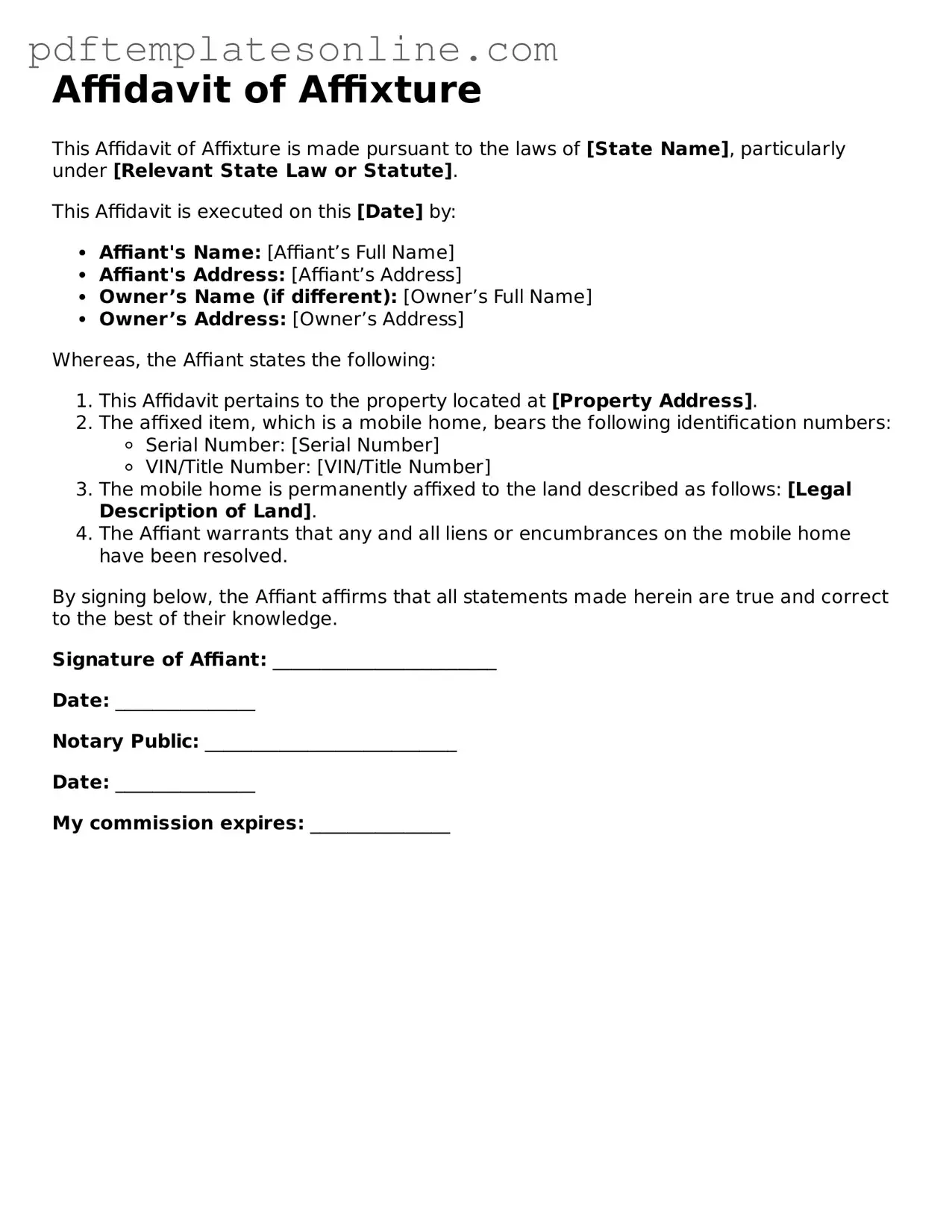Completing the Affidavit of Affixture form can be a straightforward process, but many individuals make common mistakes that can lead to delays or complications. Understanding these pitfalls is crucial for a successful filing. One frequent error is failing to provide accurate property descriptions. This includes not only the address but also the legal description of the property. A missing or incorrect description can result in the affidavit being rejected.
Another mistake involves not having the necessary signatures. The form requires the signatures of all parties involved. If even one signature is missing, it can render the document invalid. Additionally, individuals often overlook the requirement for notarization. Without a notary's seal, the affidavit may not be accepted by the relevant authorities.
People sometimes neglect to include supporting documentation. This can include proof of ownership or any relevant agreements. Submitting the affidavit without these documents can lead to questions about the validity of the claim. Furthermore, some may fill out the form hastily, leading to typographical errors. Simple mistakes in names, dates, or numbers can cause significant issues down the line.
Inconsistent information is another common issue. If the details on the affidavit do not match those on other official documents, it can create confusion. It is essential to ensure that all information is consistent and accurate across all paperwork. Additionally, some individuals fail to check the specific requirements of their state or local jurisdiction. Each area may have unique rules regarding the affidavit, and not adhering to these can result in complications.
Lastly, many people underestimate the importance of reviewing the entire form before submission. Taking the time to double-check all entries can prevent many of the aforementioned mistakes. By being thorough and attentive, individuals can help ensure that their Affidavit of Affixture is processed smoothly and efficiently.
